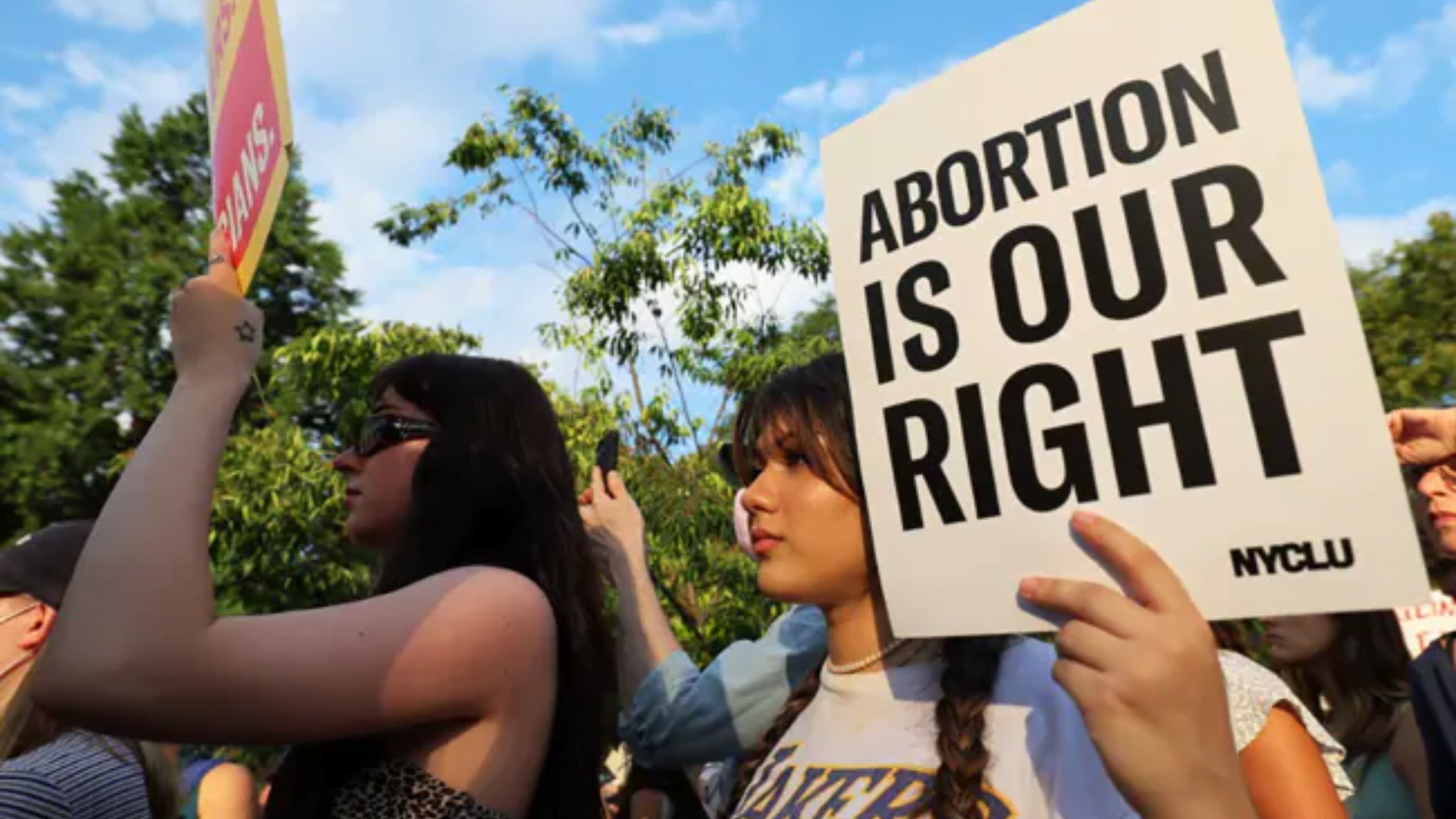In a calamitic judgement passed by the US Supreme Court in June, the Roe v. Wade judgement was overturned. When it was passed almost 50 years ago in 1973, Roe v Wade was a landmark judgement. It identified the constitutional right for women to abort their unborn foetuses. It is a little-known fact that two years before the Roe v Wade judgement, in India, the right for women to seek an abortion was ensured by the Medical Termination of Pregnancy Act, 1971. For its time, India’s laws around abortion were progressive – women had the right to terminate their pregnancy to the permissible limit of 20 weeks. Still, the MTPA, 1971 had its drawbacks. For starters, women were only allowed to terminate their pregnancies if two registered medical practitioners agreed that continuing the pregnancy in its current state posed a risk to the life of the woman or child. Pregnancies caused by rape or contraceptive failure within marriage were also fairgrounds for aborting a pregnancy. In other words, women could only freely get an abortion in the case of rape or contraceptive failure. It was up to the doctor’s jurisdiction whether or not a woman could obtain an abortion. Minors and mentally ill women were required by law to provide the consent of a guardian for an abortion to take place.
History of Abortion in India
Why did India legalise abortion in the first place? Before the Medical Termination of Pregnancy Act of 1971, (MTPA) providers of abortion services and women would face up to 3 and 7 years of imprisonment, respectively, for providing and seeking an abortion. The only exception to this rule was in the case that there was a threat to the life of the pregnant woman. In 1966, then minister of public health, law and judiciary, Shantilal Shah said that this law needed to be liberalised, as it was too restrictive.
This was what led to India’s first laws on abortion, where the termination of a pregnancy would be legal, if qualified medical practitioners allowed it. This act, though progressive, was less a result of the women’s movement in India and more of a means to control the rapidly growing population of India, especially in the lower socio-economic sections of the country.
Why did India legalise abortion in the first place? Before the Medical Termination of Pregnancy Act of 1971, (MTPA) providers of abortion services and women would face up to 3 and 7 years of imprisonment, respectively, for providing and seeking an abortion. The only exception to this rule was in the case that there was a threat to the life of the pregnant woman. In 1966, then minister of public health, law and judiciary, Shantilal Shah said that this law needed to be liberalised, as it was too restrictive.
The limit in gestation age (20 weeks) as set by law had always been questioned. Since medical facilities had developed in 1971, allowing pregnancies to be terminated at 20 weeks, there was no reason for the 20-week limit to stay. In 2021, a new MTP Act took over, that allowed abortion for up to 24 weeks of pregnancy, contingent on a few conditions. The new Act extended the limit for victims of sexual assault, minors, widows or divorcees, women with disabilities, mentally ill women, foetuses with physical or mental abnormalities, and women in emergencies.
Realities of abortion in India
It is important to ask — in a country where abortion is legal and funded by the government, why do most women still opt for unsafe abortions? According to the UNFPA’s State of the World Population Report 2022, 67% of all abortions that happened in India were unsafe.
This was what led to India’s first laws on abortion, where the termination of a pregnancy would be legal, if qualified medical practitioners allowed it. This act, though progressive, was less a result of the women’s movement in India and more of a means to control the rapidly growing population of India, especially in the lower socio-economic sections of the country.
Before the modified MTPA of 2021, the law stipulated that contraceptive failure was an acceptable ground for abortion for married women. This led many unmarried women to the dangerous path of quacks and illegal, unsafe pregnancy terminations. According to a 2018 study by Guttmacher Institute, 50% of the pregnancies in the largest Indian states were unintended. In light of this, a law that prevented unmarried women from seeking safe, legal, surgical abortions was a curtailment to their equal rights as citizens. A study published by The Lancet Global Health medical journal concluded that out of 1.56 crore abortions that took place in India in 2015, 81% were induced by home medicines. Only 14% of abortions were surgical.
The limit in gestation age (20 weeks) as set by law had always been questioned. Since medical facilities had developed in 1971, allowing pregnancies to be terminated at 20 weeks, there was no reason for the 20-week limit to stay. In 2021, a new MTP Act took over, that allowed abortion for up to 24 weeks of pregnancy, contingent on a few conditions. The new Act extended the limit for victims of sexual assault, minors, widows or divorcees, women with disabilities, mentally ill women, foetuses with physical or mental abnormalities, and women in emergencies.
In 2014-15, citing a shortage of doctors, the Ministry of Health and Family Welfare proposed an amendment to the MTPA, 1971. This amendment allowed practitioners of non-allopathic medicine (Ayurveda, naturopathy, homoeopathy) to perform medical (non-surgical) abortions. This proposal garnered widespread backlash, especially after the death of a woman in Maharashtra after she sought an abortion from a homoeopathic doctor who was allegedly performing illegal sex-selective abortions. The latest addition to the Act came in 2021.
Practitioners of alternative medicine were disallowed from performing abortions. The new Act was significant for other reasons too — the wording of the Act differed from its previous versions. The MTPA, 2021 did not limit termination of pregnancy in the case of contraceptive failure only to married women. Unmarried women can also obtain legal, safe abortions now. The new act also expands on services like therapy, social care, rehabilitation, etc to ensure comprehensive care. Additionally, the new Act ensures confidentiality — a registered medical practitioner can only disclose their patient’s name to a person authorised by law.
There is still a very strong stigma around abortion in India. A survey conducted in 2018 showed that almost 62% of 500 women interviewed in Madhya Pradesh believed abortion to be a sin. A third of the woman interviewed said they would stop associating with people who sought abortions. Unfortunately, this stigma around abortions does not evade family planners, gynaecologists and other medical practitioners either. Married women are often counselled to keep the child by family and medical practitioners alike.
There is still a very strong stigma around abortion in India. A survey conducted in 2018 showed that almost 62% of 500 women interviewed in Madhya Pradesh believed abortion to be a sin. A third of the woman interviewed said they would stop associating with people who sought abortions. Unfortunately, this stigma around abortions does not evade family planners, gynaecologists and other medical practitioners either. Married women are often counselled to keep the child by family and medical practitioners alike.
For unmarried women, the situation is exponentially worse. Unmarried pregnancy is often considered ‘illegal’, and young girls are forced into disclosing the details of their pregnancy to the police. Before the MTPA, 2021, it was illegal for unmarried women to obtain an abortion, forcing them to resort to ‘illegal’ means of abortion, such as home abortions, quacks, ‘ayurvedic’ pills, etc. In India, unsafe abortions are the third leading cause of maternal mortality. Unmarried women between the ages of 15-19 are most likely to die of an abortion-related complication.
Need for the recognition of women’s agency
The fact remains that Indian women do not have complete autonomy over their reproductive rights. Even the enhanced MTPA, 2021 gives doctors, and not women the final say over whether abortion should be carried out. In a country that is rife with stigma, vesting the decision-making prowess in the doctors takes away power from women who many need or want an abortion for personal reasons.
While the new Act does not specify that women need to be married to obtain an abortion, it does specify the need for a partner – in this way, sex workers, already deeply stigmatised, are excluded even further. In many public and private hospitals, medical practitioners insist on getting a husband’s approval to perform an abortion, although the law does not require it. A recent study interviewed 72 women and two children who were victims of rape and had sought abortions — it revealed that 77% of them could not obtain one as medical practitioners asked for a ‘husband’s approval’ to perform the abortion.
Also read: How Representation In Media Shapes The Public Opinion On Abortion
The decision to keep, or not keep a child should rest with the pregnant woman alone. Beyond this, any intervention should be considered an infringement of the fundamental right to privacy of women. Despite being comparatively progressive, the MTPA, 2021 has failed to incorporate a rights-based approach to obtaining an abortion.
Also read: Is Media Channeling The Right Information On Abortion?
Shivani Deshmukh is a recent graduate of Ashoka University. Her interests lie in gender, class and public space, and she is currently writing a thesis on the intersection of the three.
Featured image source: NDTV




